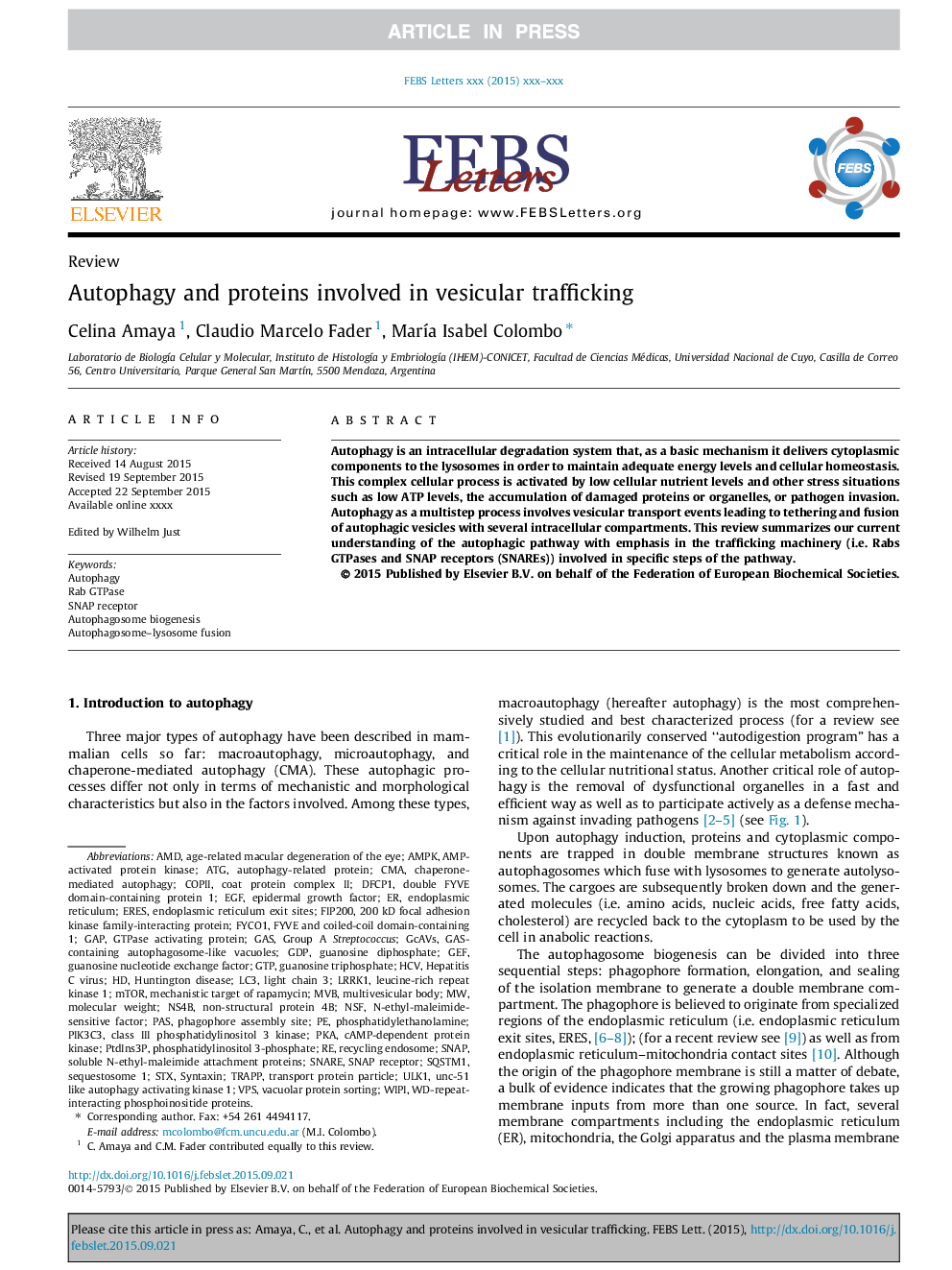| Article ID | Journal | Published Year | Pages | File Type |
|---|---|---|---|---|
| 10869825 | FEBS Letters | 2015 | 11 Pages |
Abstract
Autophagy is an intracellular degradation system that, as a basic mechanism it delivers cytoplasmic components to the lysosomes in order to maintain adequate energy levels and cellular homeostasis. This complex cellular process is activated by low cellular nutrient levels and other stress situations such as low ATP levels, the accumulation of damaged proteins or organelles, or pathogen invasion. Autophagy as a multistep process involves vesicular transport events leading to tethering and fusion of autophagic vesicles with several intracellular compartments. This review summarizes our current understanding of the autophagic pathway with emphasis in the trafficking machinery (i.e. Rabs GTPases and SNAP receptors (SNAREs)) involved in specific steps of the pathway.
Keywords
SQSTM1AMDpKaRab GTPaseSNAREATGLC3EREssequestosome 1phagophore assembly siteVPSFIP200FYCO1NS4BMVBSTXGEFULK1CMAAMPKEGFLeucine-rich repeat kinase 1GTPDfcp1PtdIns3Pcoat protein complex IILRRK1WIPITRAPPmTOREndoplasmic reticulum exit sitesGuanosine nucleotide exchange factorPIK3C3NSFAMP-activated protein kinaseChaperone-mediated autophagyGTPase Activating Proteinunc-51 like autophagy activating kinase 1recycling endosomeAutophagymultivesicular bodyHuntington diseaseGDPlight chain 3syntaxinendoplasmic reticulumGAPSNAPepidermal growth factorphosphatidylethanolaminephosphatidylinositol 3-phosphateVacuolar protein sortingPASMechanistic target of rapamycinHepatitis C virusHCVMolecular weighttransport protein particleautophagy-related proteincAMP-dependent protein kinaseCOPIIGasGroup A StreptococcusGuanosine triphosphateguanosine diphosphateSNAP Receptor
Related Topics
Life Sciences
Agricultural and Biological Sciences
Plant Science
Authors
Celina Amaya, Claudio Marcelo Fader, MarÃa Isabel Colombo,
